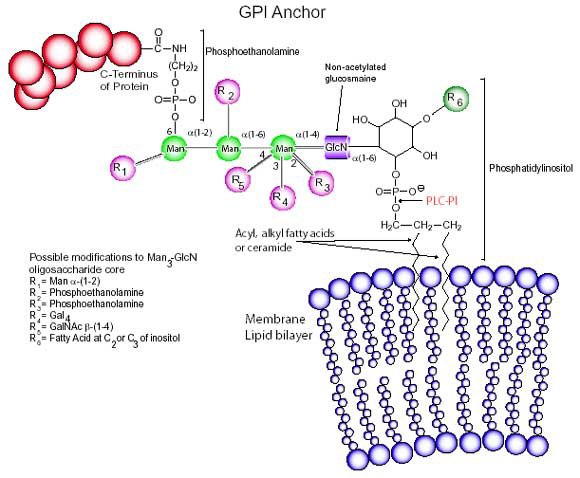Gpi Anchor Structure
Glycosylphosphatidylinisotol (GPI) anchored proteins are membrane bound proteins found throughout the animal kingdom. GPI anchored proteins are linked at their carboxyterminus through a phosphodiester linkage of phosphoethanolamine to a trimannosyl-non-acetylated glucosamine (Man3-GlcN) core. The reducing end of GlcN is linked to phosphatidylinositol (PI). PI is then anchored through another phosphodiester linkage to the cell membrane through its hydrophobic region. Intermediate forms are also present in high concentrations in microsomal preparations. The Man3-GlcN oligosaccharide core may undergo various modifications during secretion from the cell.
Their functionality ranges from enzymatic to antigenic and adhesion. They contribute to the overall organization of membrane bound proteins and are important in apical protein postioning. GPI-anchored proteins also play a critical role in a variety of receptor-mediated signal transduction pathways.
Release of GPI anchored proteins can be accomplished by treatment with Phospholipase C, Phosphatidylinositolspecific (PLC-PI) (Product Codes P5542 and P8804). The enzyme specifically hydrolyzes the phosphodiester bond of phosphatidylinositol to form a free 1,2-diacylglycerol and glycopeptide-bound inositol cyclic-1,2-phosphate.

Figure 1.
To continue reading please sign in or create an account.
Don't Have An Account?